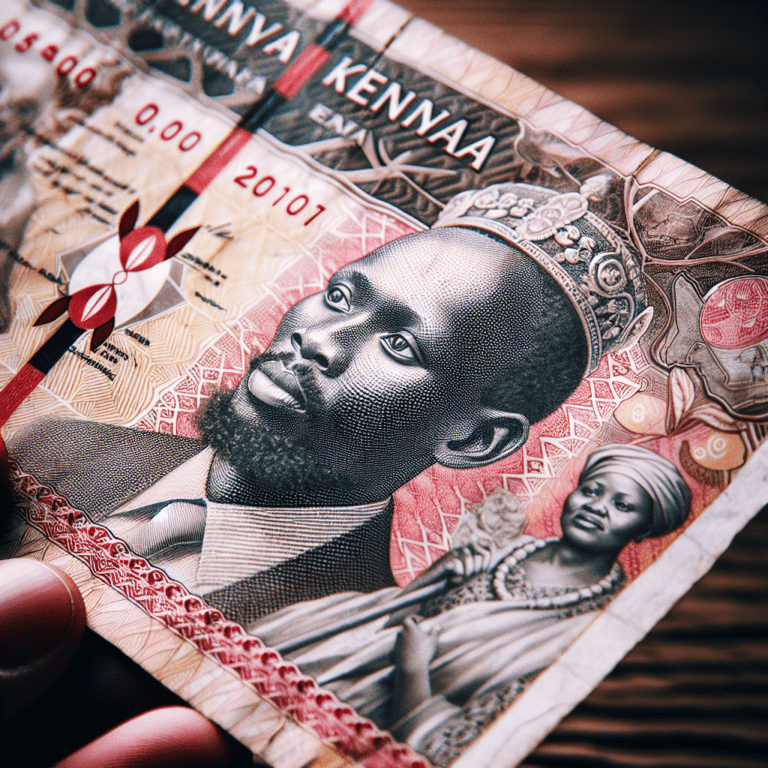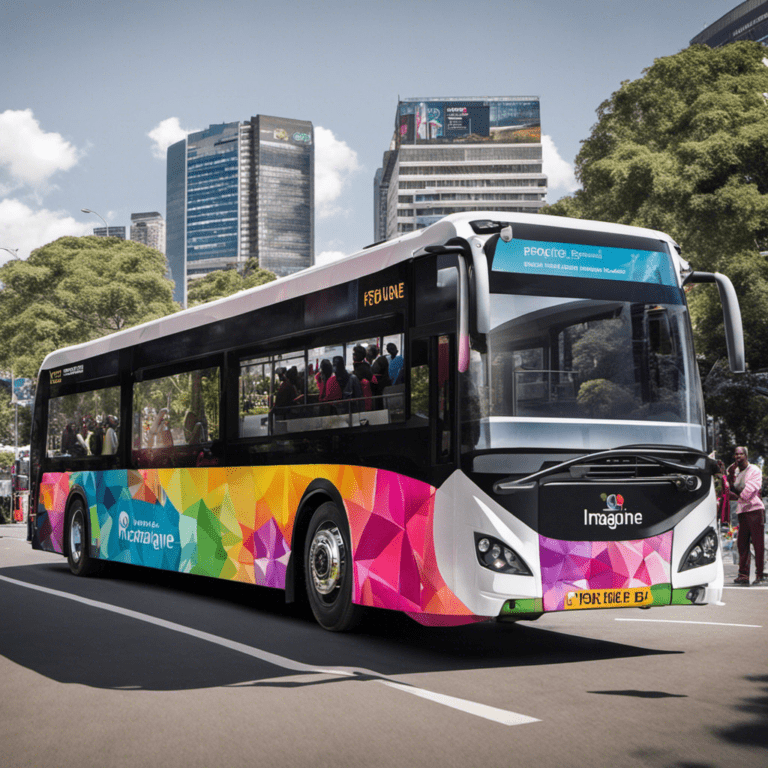What Were The Economic Policies Of Early Post-independence Kenya?
In the early years after gaining independence, Kenya faced the challenge of establishing economic stability and growth. This article takes a closer look at the economic policies that were implemented during this crucial period in Kenya’s history. From import substitution to the creation of agricultural cooperatives, these policies aimed to lay the foundation for a self-sufficient and prosperous nation. Join us as we explore the various strategies employed by early post-independence Kenya to navigate the complex world of economics.
Agricultural Policies
In the early years of post-independence Kenya, the government implemented several agricultural policies aimed at transforming the sector and boosting economic growth. One of the significant strategies was the shift to cash crops. This involved encouraging farmers to grow cash crops like coffee, tea, and horticultural products for export, rather than subsistence farming. The government believed that export-oriented agriculture would generate foreign exchange and contribute to the country’s economic development.
However, the legacy of colonialism in land distribution posed a challenge to agricultural policies. The majority of fertile land was owned by a few wealthy individuals, leaving small-scale farmers with limited access to land. To address this inequality, the government promoted cooperatives to enable small farmers to pool resources and access land collectively. This cooperative movement aimed to empower farmers, improve agricultural productivity, and ensure a fair distribution of resources.
To support farmers and promote agricultural productivity, the government provided subsidies and inputs such as fertilizers, seeds, and pesticides. These subsidies helped to reduce production costs and incentivize farmers to adopt modern practices. Additionally, the government invested in irrigation and water management to improve water availability for farming activities. This infrastructure development was crucial in ensuring sustainable agricultural practices, especially in arid and semi-arid regions.
Industrialization and Import Substitution
Another key economic policy pursued by early post-independence Kenya was industrialization and import substitution. The government aimed to reduce dependency on imported goods by promoting the production of domestically manufactured products. This drive for import substitution involved establishing state-owned enterprises to produce goods that were previously imported, such as textiles, furniture, and processed foods.
To protect domestic industries and stimulate local production, the government implemented protectionist policies. These policies included imposing tariffs and trade barriers on imported goods, making them more expensive and less competitive in the local market. The goal was to create a conducive environment for the growth of small and medium enterprises (SMEs) and reduce reliance on foreign products.
To facilitate industrialization, the government also focused on technology acquisition and transfer. This involved establishing partnerships with foreign companies and institutions to acquire cutting-edge technology and skills. Through technology transfer, local industries could upgrade their production methods and enhance their competitiveness in the global market.
Foreign Investment and Trade Policies
Kenya recognized the importance of foreign investment and international trade in driving economic growth. The government implemented policies to attract foreign direct investment (FDI) by offering incentives like tax breaks, streamlined regulations, and infrastructural support. The goal was to encourage foreign companies to invest in various sectors of the economy, such as manufacturing, services, and tourism.
To promote exports and diversify the country’s export base, the government developed export promotion strategies. These strategies aimed to identify new markets for Kenyan products abroad and encourage local industries to produce goods with export potential. Furthermore, Kenya pursued bilateral and multilateral trade agreements with other countries and regional blocs to expand market access for its products.
In addition to goods, the government also recognized the potential of the tourism sector as a significant contributor to the economy. Policies were implemented to promote tourism and attract international visitors. This was done through marketing campaigns, improvements in infrastructure, and the preservation of natural and cultural heritage sites.
Foreign investment and trade policies also acknowledged the importance of inward remittances. The government implemented measures to facilitate the transfer of funds from Kenyan diaspora abroad, recognizing the significant role remittances play in sustaining the economy and supporting households.
Infrastructure Development
Infrastructure development was a critical component of Kenya’s economic policies. The government invested heavily in improving roads and transportation networks to enhance connectivity within the country. This involved the construction and maintenance of highways, as well as upgrading and expanding the railway system. Improved transportation infrastructure facilitated the movement of goods, people, and services, consequently reducing transportation costs and boosting economic activities.
Energy and power sector development was also prioritized. Kenya invested in expanding electricity generation capacity, particularly in renewable energy sources like hydroelectric power, geothermal, and wind energy. This not only ensured a reliable power supply but also created opportunities for the development of industries that require substantial energy inputs.
Recognizing the importance of telecommunications and information technology in fostering economic development, the government made efforts to expand access to affordable and reliable communication services. This involved enhancing the telecommunications infrastructure, promoting the use of mobile phones, and increasing internet connectivity across the country. Improved communication networks facilitated business operations, information dissemination, and access to markets, thus supporting entrepreneurial endeavors.
Efforts were also made to improve water and sanitation infrastructure. The government invested in the construction of dams, water treatment plants, and pipelines to ensure the availability and accessibility of clean water. Similarly, initiatives were undertaken to enhance sanitation services, including the construction of sewage systems and public toilets. These infrastructure developments not only improved the quality of life for Kenyan citizens but also created employment opportunities and supported economic growth.
Urban development was another focus area of infrastructure policies. The government implemented urban planning strategies to manage urbanization, improve housing conditions, and create sustainable cities. This involved the construction of affordable housing units, provision of amenities like green spaces and recreational facilities, and the development of industrial and commercial zones.
Education and Human Capital Development
Understanding the crucial role of education in human capital development, the early post-independence government of Kenya prioritized education policies. One notable policy was the introduction of free primary education. This initiative aimed to increase access to education for all children, especially those from disadvantaged backgrounds. By eliminating school fees, more children could enroll in schools, improving literacy rates and laying the foundation for lifelong learning.
To address the needs of the labor market and equip individuals with skills relevant to the economy, vocational training programs were established. These programs provided practical training in various trades and professions, enabling individuals to acquire employable skills and contribute to economic development. Additionally, the government focused on expanding access to higher education and research institutions to nurture a skilled workforce capable of driving innovation and technology adoption.
Promotion of science, technology, engineering, and mathematics (STEM) subjects played a crucial role in shaping educational policies. The government recognized the importance of STEM fields in driving economic growth and development. Emphasis was placed on the provision of resources and quality education in these areas to equip students with the necessary skills to participate in the increasingly technology-driven global economy.
Investment in health and social services was another dimension of human capital development. The government allocated resources to improve access to healthcare services, including the construction and equipping of hospitals and clinics, recruitment and training of healthcare professionals, and the provision of essential medicines. These investments aimed to improve the overall health status of the population and enhance productivity.
Rural Development and Land Redistribution
To address rural poverty and inequality, the Kenyan government implemented policies focused on rural development and land redistribution. Settlement schemes were established to enable landless individuals and families to acquire land for agriculture and settlement purposes. These schemes involved the allocation of land through a structured process, providing an opportunity for the landless to become self-reliant and economically empowered.
Land reclamation and conservation programs were also initiated to optimize land use and increase productivity in rural areas. These programs aimed to rehabilitate degraded land, improve soil fertility, and promote sustainable farming practices. By making land more productive, these initiatives contributed to poverty reduction and increased agricultural output.
Community development projects were implemented to address the specific needs of rural communities. These projects focused on improving access to basic amenities like clean water, sanitation facilities, healthcare centers, and schools. By investing in rural infrastructure and services, the government aimed to create an enabling environment for economic activities and improve the well-being of rural populations.
Promotion of irrigation agriculture was another key policy in rural development. The government invested in the construction of irrigation systems and provided support to farmers in adopting irrigated farming practices. This was particularly important in arid and semi-arid regions where rainfall was limited, but the potential for agricultural production was high. Access to reliable irrigation systems enabled farmers to produce crops throughout the year, enhancing food security and boosting agricultural productivity.
To support rural entrepreneurs and farmers, the government facilitated access to credit and financial services. This involved the establishment of microfinance institutions and agricultural lending programs to provide affordable credit to small-scale farmers. By availing financial resources, farmers could invest in agricultural inputs, expand their businesses, and improve their livelihoods.
Public Sector Development
The early post-independence government of Kenya pursued public sector development policies aimed at enhancing state control over key sectors of the economy. Nationalization of major industries was a significant strategy employed to bring essential sectors, such as banking, insurance, and mining, under government ownership. Nationalization aimed to ensure the equitable distribution of resources, reduce foreign dominance in strategic sectors, and generate revenue for national development.
Creation of parastatals, state-owned enterprises, was another approach taken to drive economic development. Parastatals were established to champion the development of specific sectors, such as agriculture, manufacturing, and infrastructure. These entities played a critical role in providing essential services, generating employment, and supporting economic growth through the implementation of sector-specific policies and programs.
Decentralization and devolution policies aimed to empower local authorities and communities by transferring decision-making powers and resources to lower levels of government. This decentralization approach intended to enhance service delivery, promote local economic development, and provide citizens with a greater voice in decision-making processes. By strengthening local governments, the government sought to foster grassroots development and address regional disparities.
Public service reform was a critical part of public sector development. The government recognized the need to enhance the efficiency, transparency, and accountability of public institutions. Reforms were implemented to streamline bureaucratic processes, improve service delivery, and combat corruption. These reforms aimed to create an enabling environment for both public and private sector activities, ultimately contributing to economic growth and development.
Promotion of public-private partnerships (PPPs) was also emphasized in public sector development policies. PPPs involved collaboration between the government and private sector entities to undertake infrastructure projects and deliver public services. Through these partnerships, the government aimed to leverage private sector resources, expertise, and efficiency to enhance service delivery and bridge infrastructure gaps. PPPs provided a platform for private sector participation in national development while minimizing the burden on public finances.
Fiscal and Monetary Policies
Fiscal and monetary policies were crucial in ensuring macroeconomic stability and promoting sustainable economic growth. Taxation and revenue generation policies were implemented to provide the government with adequate resources for public expenditure. The government aimed to create a fair and predictable tax system that encouraged compliance while minimizing distortions that could hinder economic activities. By broadening the tax base and ensuring efficient tax collection, the government sought to mobilize domestic resources for development.
Budgeting and expenditure management policies were crucial in ensuring effective allocation and utilization of public funds. The government adopted transparent and accountable budgeting processes to prioritize key development projects and programs. Effective expenditure management aimed to optimize the utilization of resources, reduce waste, and achieve value for money in public investments.
Exchange rate and monetary policies were crucial in maintaining price stability and ensuring competitiveness in international trade. The government implemented measures to manage exchange rates, including interventions in the foreign exchange market, to stabilize the currency and promote export competitiveness. Monetary policies, such as interest rate adjustments and reserve requirements, were employed to manage inflation, control credit growth, and ensure the stability of the financial sector.
Financial sector regulation was another key aspect of fiscal and monetary policies. The government established regulatory frameworks and institutions to oversee the operations of banks, insurance companies, and other financial institutions. The aim was to maintain the stability and integrity of the financial sector, protect the rights of consumers, and promote sound financial practices. Effective financial sector regulation was crucial for attracting foreign investment, enhancing access to credit, and facilitating economic transactions.
Empowerment of Indigenous Businesses
To promote economic empowerment and foster inclusive growth, early post-independence Kenya implemented policies focused on supporting indigenous businesses. Small and medium enterprises (SMEs) were at the center of these policies, as they played a critical role in job creation and economic development. The government provided financial and non-financial support to SMEs, including access to credit, business development services, and market linkages. By supporting SMEs, the government aimed to create a conducive environment for sustainable entrepreneurship and enhance the competitiveness of local businesses.
Promoting indigenous entrepreneurship was another key aspect of empowering indigenous businesses. The government encouraged entrepreneurial activities by providing incentives, training, and mentorship programs. These initiatives aimed to harness the innovative capacity of citizens, foster business start-ups, and nurture a culture of entrepreneurship in the country. By supporting indigenous entrepreneurs, the government aimed to create a vibrant business ecosystem that would drive economic growth and job creation.
Access to credit and financial services was crucial in empowering indigenous businesses. The government implemented policies to enhance financial inclusion, particularly for individuals and businesses in underserved areas. This involved the establishment of microfinance institutions, community-based financial organizations, and innovative financial products tailored to the needs of indigenous businesses. Access to affordable credit was instrumental in enabling business expansion, investment in new technologies, and increased productivity.
Business training and capacity building programs were also implemented to equip indigenous businesses with the necessary skills and knowledge for success. The government provided entrepreneurship training, workshops, and mentorship programs to enhance the technical and managerial competencies of indigenous entrepreneurs. By investing in human capital development, the government aimed to improve the quality and competitiveness of indigenous businesses, ultimately driving economic growth and reducing poverty.
Government procurement policies were another avenue through which indigenous businesses were empowered. The government implemented preferential procurement policies that gave priority to local suppliers and contractors in public procurement processes. This aimed to create opportunities for indigenous businesses to participate in government contracts, thereby stimulating domestic economic activities and supporting local industries. By promoting indigenous businesses through government procurement, the government sought to reduce dependency on imports and create a favorable environment for local economic development.
In conclusion, the economic policies of early post-independence Kenya were multifaceted and aimed at driving economic growth, reducing poverty, and fostering social development. From agricultural policies focused on cash crops to the empowerment of indigenous businesses, the government pursued strategies to transform various sectors of the economy. These policies laid the foundation for Kenya’s economic development and continue to shape the country’s trajectory today.







